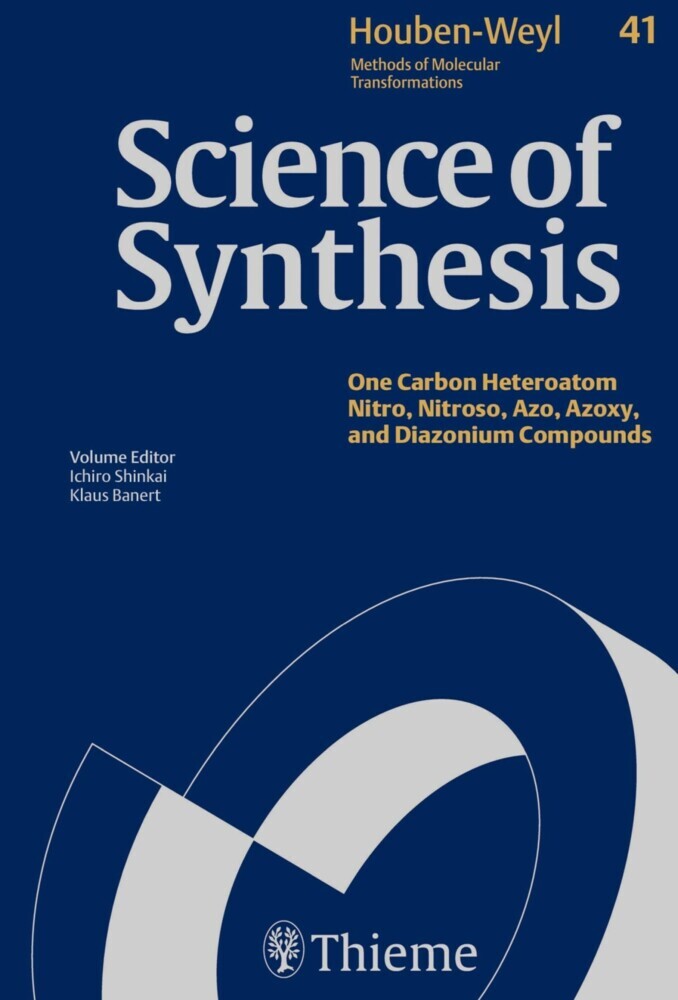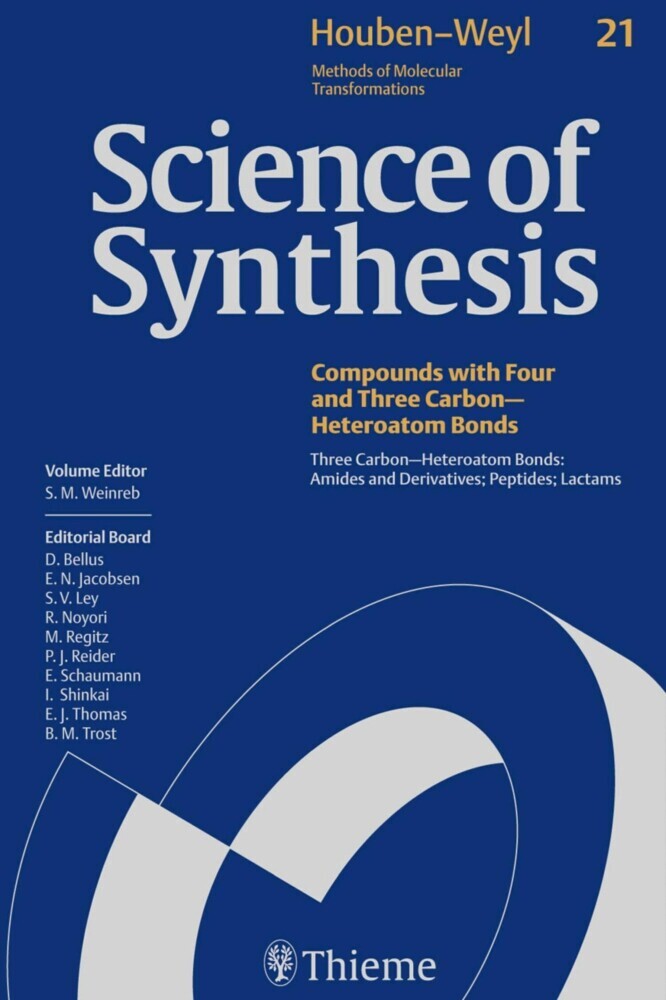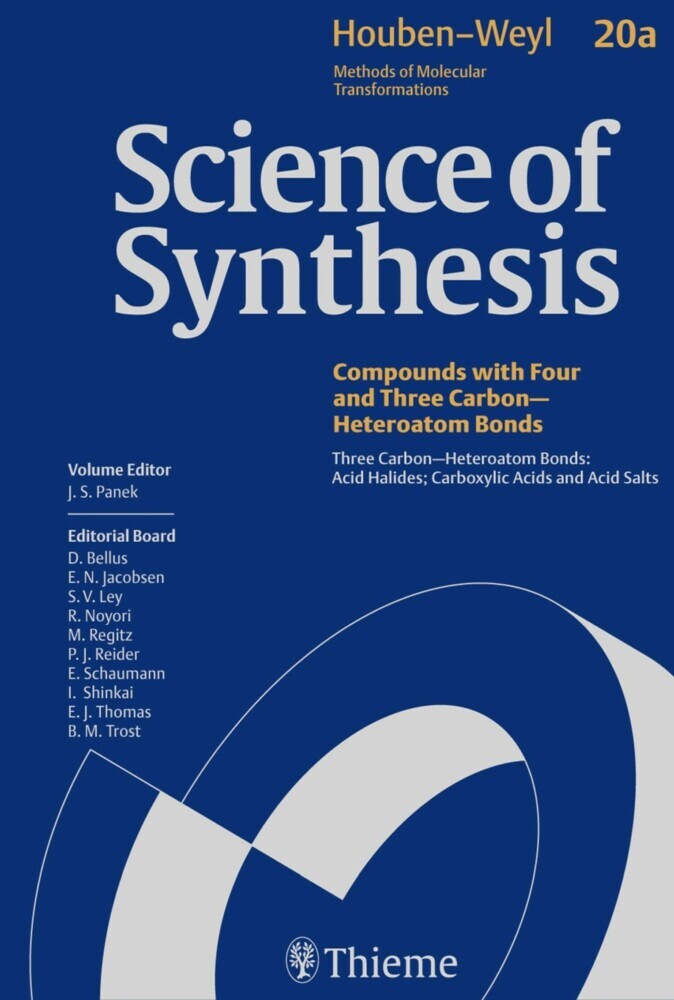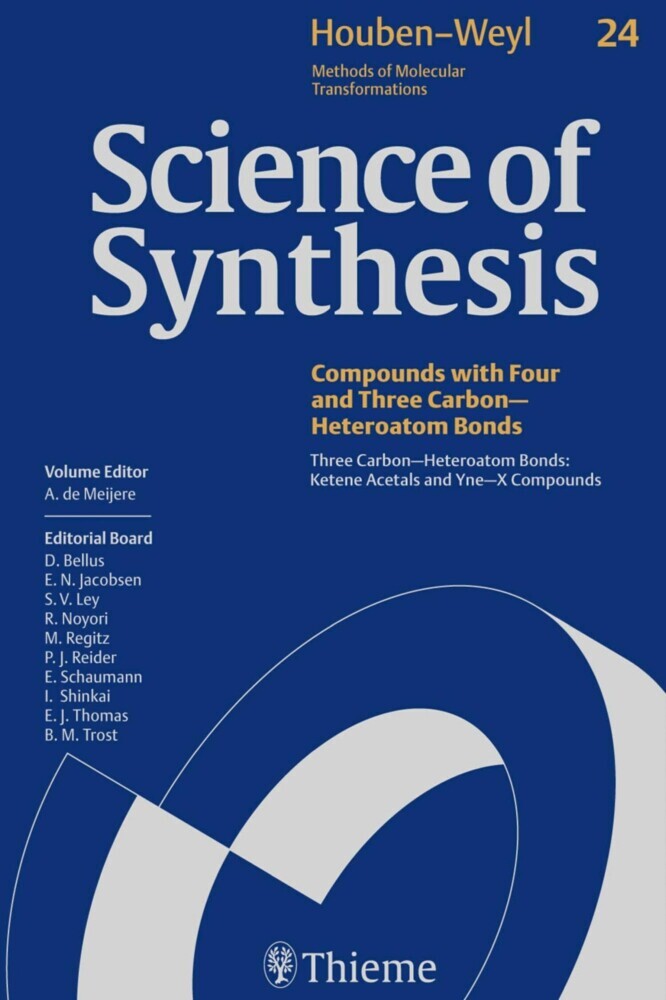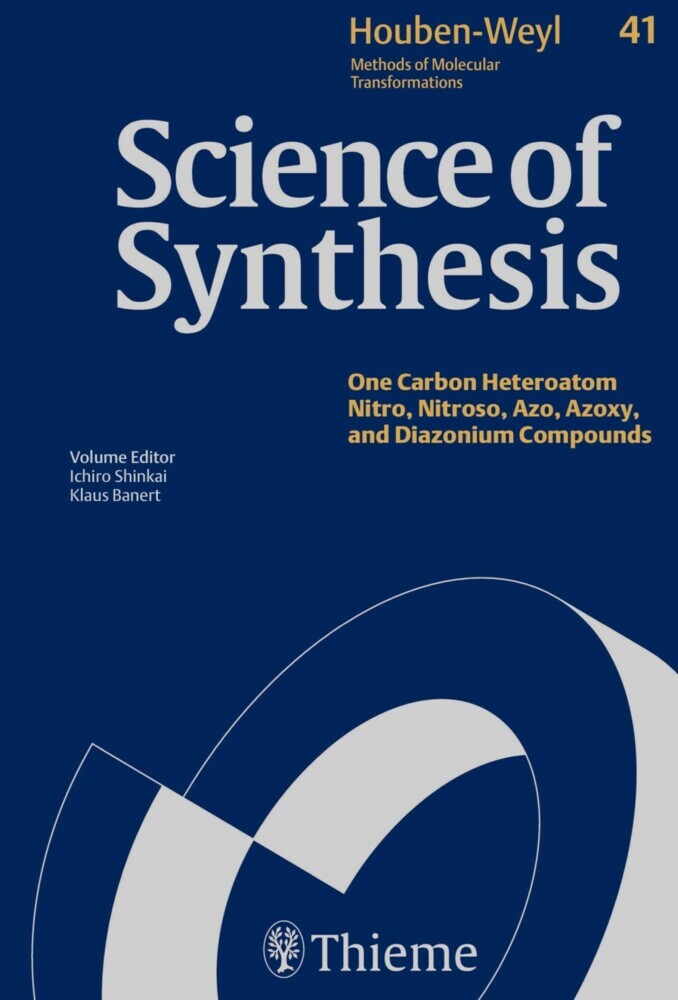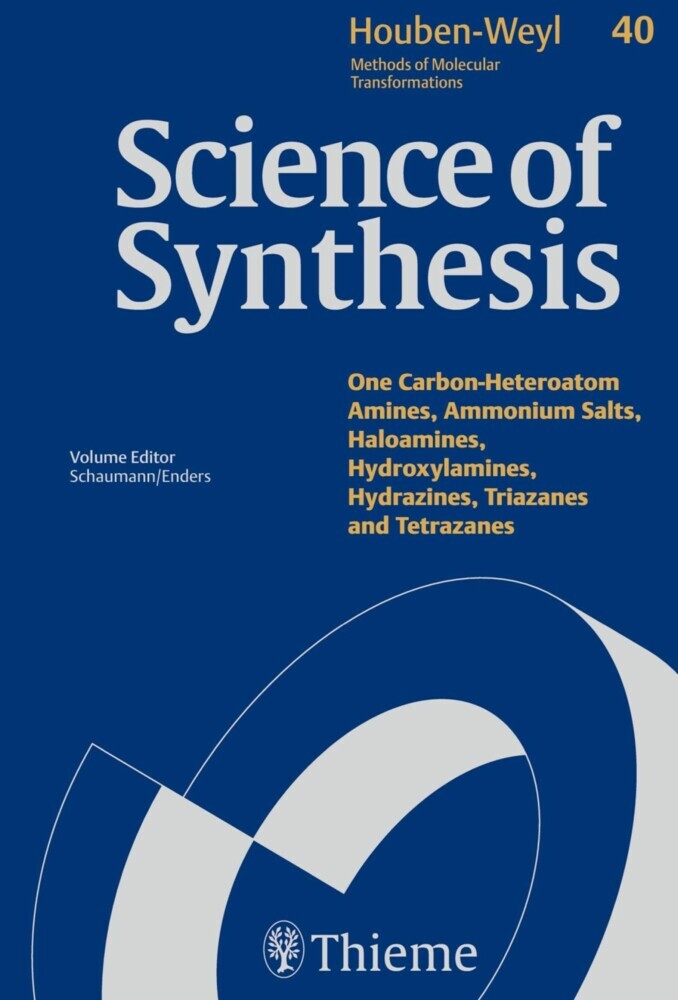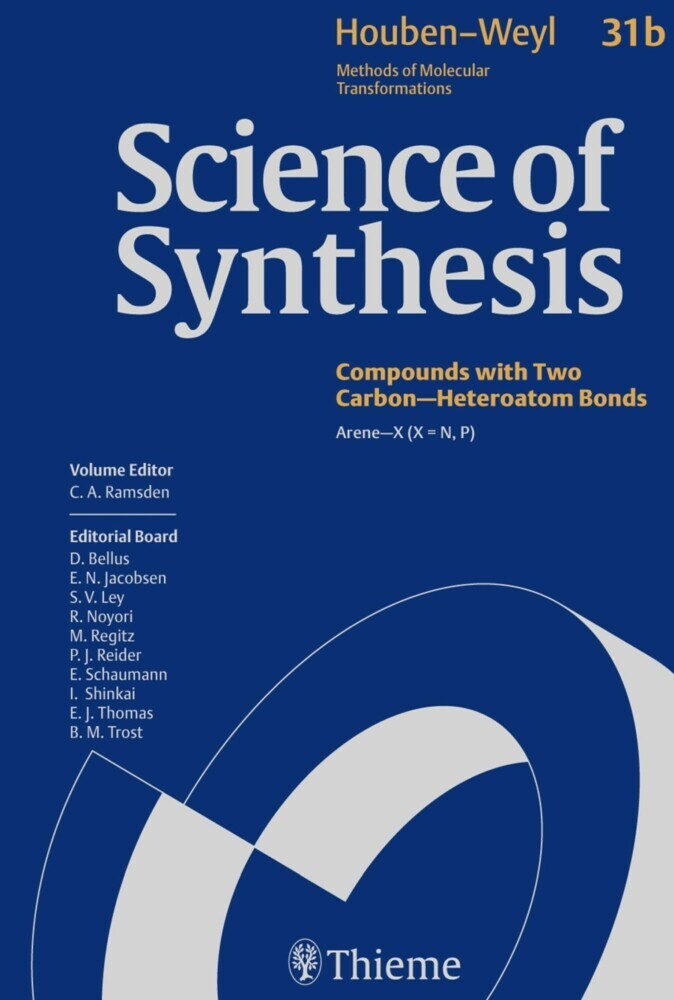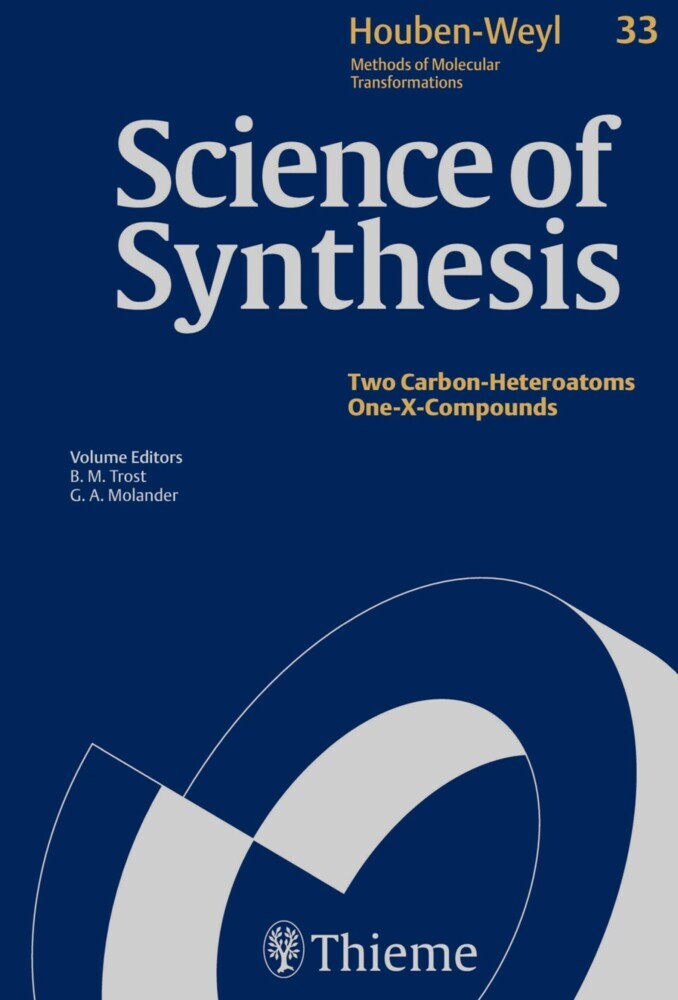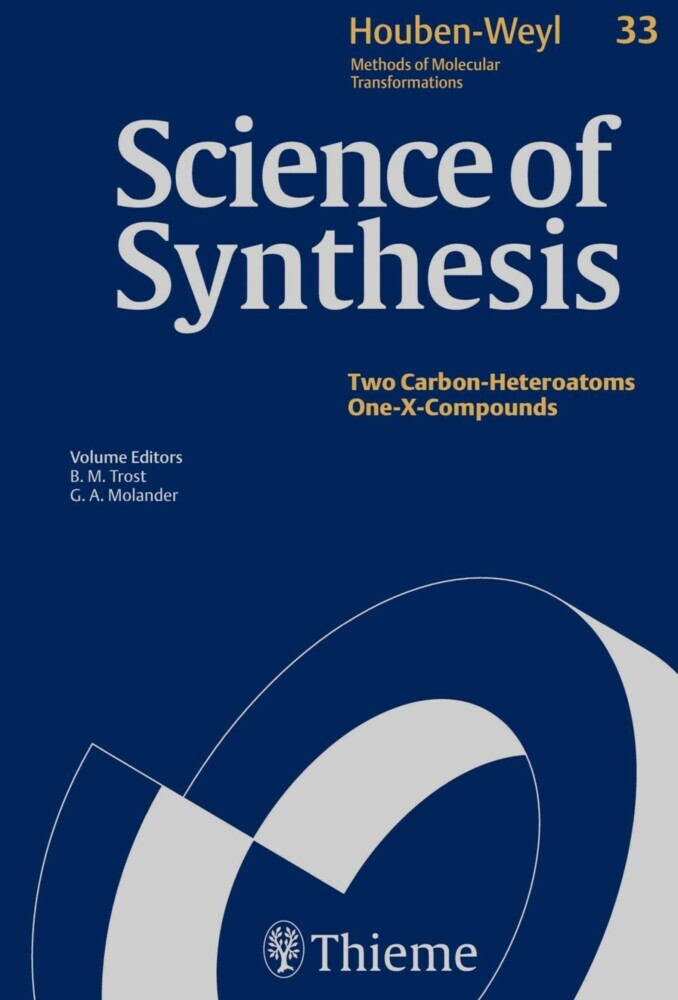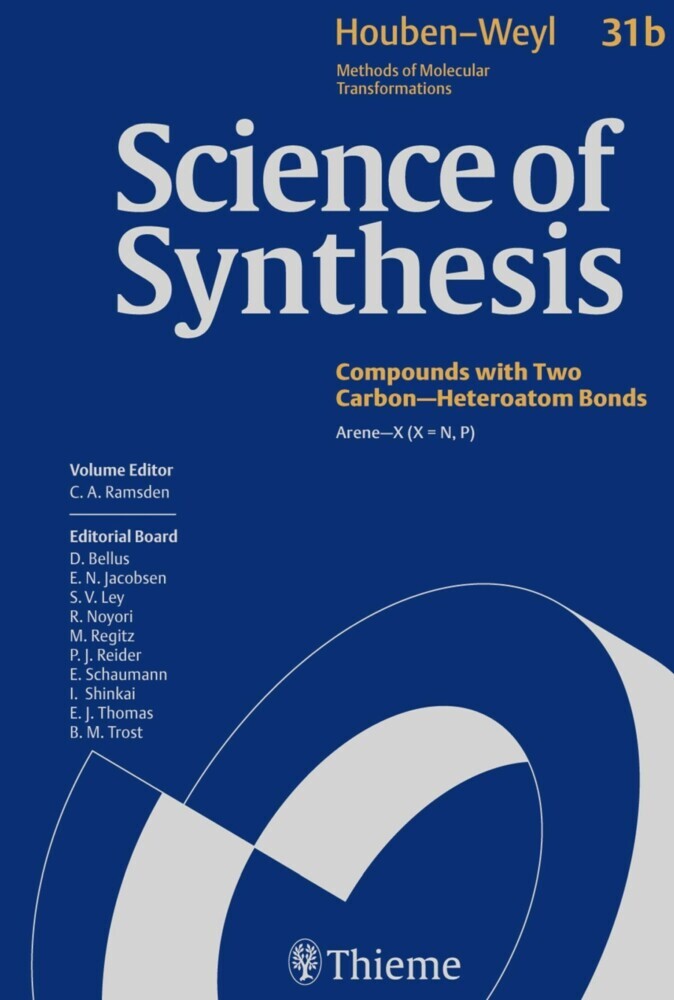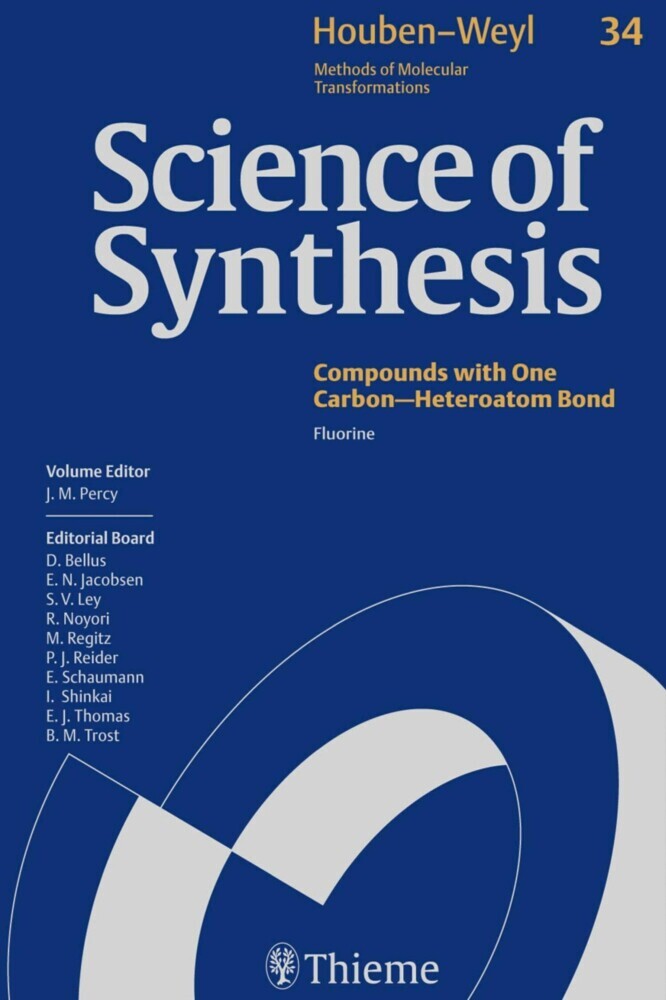Science of Synthesis: Houben-Weyl Methods of Molecular Transformations Vol. 41
Nitro, Nitroso, Azo, Azoxy, and Diazonium Compounds, Azides, Triazenes, and Tetrazenes
Science of Synthesis: Houben-Weyl Methods of Molecular Transformations Vol. 41
Nitro, Nitroso, Azo, Azoxy, and Diazonium Compounds, Azides, Triazenes, and Tetrazenes
Science of Synthesis: Houben-Weyl Methods of Molecular Transformations is the entirely new edition of the acclaimed reference series Houben-Weyl, the standard synthetic chemistry resource since 1909. This new edition is published in English and will comprise 48 volumes published between the years 2000 and 2008.
Science of Synthesis is a quality reference work developed by a highly esteemed editorial board to provide a comprehensive and critical selection of reliable organic and organometallic synthetic methods. This unique resource is designed to be the first point of reference when searching for a synthesis strategy.
- Contains the expertise of presently 400 leading chemists worldwide
- Critically evaluates the preparative applicability and significance of the synthetic methods
- Discusses relevant background information and provides detailed experimental procedures
For full information on the Science of Synthesis series, visit the Science of Synthesis Homepage
1;Science of Synthesis - Volume 41: Nitro, Nitroso, Azo, Azoxy, and Diazonium Compounds, Azides, Triazenes, and Tetrazenes;1 1.1;Title page;3 1.2;Imprint;5 1.3;Preface;6 1.4;Volume Editor's Preface;8 1.5;Overview;10 1.6;Table of Contents;12 1.7;Introduction;32 1.8;41.1 Product Class 1: Nitroalkanes;40 1.8.1;41.1.1 Synthesis of Product Class 1;40 1.8.1.1;41.1.1.1 Synthesis by Substitution;40 1.8.1.1.1;41.1.1.1.1 Method 1: Substitution of Hydrogen Using Nitric Acid;40 1.8.1.1.1.1;41.1.1.1.1.1 Variation 1: Using Dilute Nitric Acid;40 1.8.1.1.1.2;41.1.1.1.1.2 Variation 2: Using Concentrated or Fuming Nitric Acid;41 1.8.1.1.1.3;41.1.1.1.1.3 Variation 3: Using Nitric Acid with Sulfuric Acid;43 1.8.1.1.1.4;41.1.1.1.1.4 Variation 4: Using Nitric Acid with Acetic Acid;44 1.8.1.1.1.5;41.1.1.1.1.5 Variation 5: Using Nitric Acid in Ionic Liquids;44 1.8.1.1.1.6;41.1.1.1.1.6 Variation 6: Using Nitric Acid in the Gas Phase;44 1.8.1.1.1.7;41.1.1.1.1.7 Variation 7: Using Nitric Acid with Oxygen and Halogens in the Gas Phase;45 1.8.1.1.2;41.1.1.1.2 Method 2: Substitution of Hydrogen Using Metal Nitrates;46 1.8.1.1.2.1;41.1.1.1.2.1 Variation 1: Using Copper(II) or Manganese(II) Nitrates;46 1.8.1.1.2.2;41.1.1.1.2.2 Variation 2: Using Aluminum Trinitrate;46 1.8.1.1.3;41.1.1.1.3 Method 3: Substitution of Hydrogen Using Sulfuric Acid and Ammonium Nitrate;46 1.8.1.1.4;41.1.1.1.4 Method 4: Substitution of Hydrogen Using Nitrogen Dioxide;46 1.8.1.1.4.1;41.1.1.1.4.1 Variation 1: Without Additional Reagents;46 1.8.1.1.4.2;41.1.1.1.4.2 Variation 2: With Oxygen;47 1.8.1.1.4.3;41.1.1.1.4.3 Variation 3: With Hydrogen Peroxide;48 1.8.1.1.5;41.1.1.1.5 Method 5: Substitution of Hydrogen Using Sodium Nitrite and Silver(I) Nitrate;48 1.8.1.1.6;41.1.1.1.6 Method 6: Substitution of Hydrogen Using Alkyl Nitrites;48 1.8.1.1.6.1;41.1.1.1.6.1 Variation 1: Without Additional Reagents;48 1.8.1.1.6.2;41.1.1.1.6.2 Variation 2: With 3-Methylbutyl Nitrite and Butyllithium;49 1.8.1.1.7;41.1.1.1.7 Method 7: Substitution of Hydrogen Using Alkyl Nitrates with a Base;49 1.8.1.1.8;41.1.1.1.8 Method 8: Substitution of Hydrogen Using 2,4,6-Trichloro-N-nitroaniline;51 1.8.1.1.9;41.1.1.1.9 Method 9: Substitution of Lithium;51 1.8.1.1.10;41.1.1.1.10 Method 10: Substitution of Potassium;51 1.8.1.1.11;41.1.1.1.11 Method 11: Substitution of Magnesium;51 1.8.1.1.12;41.1.1.1.12 Method 12: Substitution of Mercury;52 1.8.1.1.13;41.1.1.1.13 Method 13: Substitution of a Carboxy Group;52 1.8.1.1.14;41.1.1.1.14 Method 14: Substitution of a Cyano Group;53 1.8.1.1.15;41.1.1.1.15 Method 15: Substitution of Chlorine Using Sodium Nitrite;53 1.8.1.1.15.1;41.1.1.1.15.1 Variation 1: Without Additional Reagents;54 1.8.1.1.15.2;41.1.1.1.15.2 Variation 2: With Urea;54 1.8.1.1.15.3;41.1.1.1.15.3 Variation 3: With Benzene-1,3,5-triol;55 1.8.1.1.16;41.1.1.1.16 Method 16: Substitution of Chlorine Using Potassium Nitrite;55 1.8.1.1.16.1;41.1.1.1.16.1 Variation 1: In the Presence of a Base;55 1.8.1.1.16.2;41.1.1.1.16.2 Variation 2: With Crown Ethers;56 1.8.1.1.17;41.1.1.1.17 Method 17: Substitution of Chlorine Using Silver(I) Nitrite;56 1.8.1.1.17.1;41.1.1.1.17.1 Variation 1: Without Additional Reagents;56 1.8.1.1.17.2;41.1.1.1.17.2 Variation 2: With Urea;57 1.8.1.1.18;41.1.1.1.18 Method 18: Substitution of Chlorine Using Mercury(I) Nitrite;58 1.8.1.1.19;41.1.1.1.19 Method 19: Substitution of Chlorine Using Polymer-Supported Nitrite;58 1.8.1.1.20;41.1.1.1.20 Method 20: Substitution of Bromine Using Sodium Nitrite;58 1.8.1.1.20.1;41.1.1.1.20.1 Variation 1: Without Additional Reagents;58 1.8.1.1.20.2;41.1.1.1.20.2 Variation 2: With Benzene-1,2-diol;60 1.8.1.1.20.3;41.1.1.1.20.3 Variation 3: With Benzene-1,3,5-triol;60 1.8.1.1.20.4;41.1.1.1.20.4 Variation 4: With Urea;62 1.8.1.1.20.5;41.1.1.1.20.5 Variation 5: With Urea and Benzene-1,3,5-triol;63 1.8.1.1.20.6;41.1.1.1.20.6 Variation 6: With a Phase-Transfer Catalyst;65 1.8.1.1.20.7;41.1.1.1.20.7 Variation 7: With an
| ISBN | 9783131721914 |
|---|---|
| Artikelnummer | 9783131721914 |
| Medientyp | E-Book - PDF |
| Copyrightjahr | 2014 |
| Verlag | Georg Thieme Verlag KG |
| Umfang | 770 Seiten |
| Sprache | Englisch |
| Kopierschutz | Digitales Wasserzeichen |

